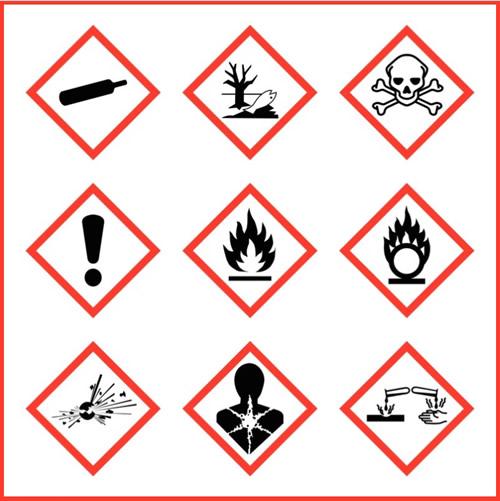WHMIS – GHS Training
The goal of WHMIS – GHS training is to supply workers with a basic understanding of how to identify and deal with the hazardous materials within their workplace. WHMIS – GHS is enforced by the provincial or territorial government departments or agencies responsible for health and safety, or by the Labour Program for federally regulated workplaces.
According to the Occupational Health and Safety Act (OHSA), most employers are required to: ensure hazardous products are identified, obtain safety data sheets and make them available to all workers, and provide instruction and training to workers. The WHMIS Regulation (R.R.O. 1990, Regulation 860) states the employer’s duties regarding labels and safety data sheets for hazardous materials. It outlines the content and delivery of worker education programs. It also describes the types of confidential business information the employer may withhold from a label or safety data sheet.
WHMIS – GHS Training Outline (2 Hours):
- History of WHMIS
- What is included in the act and what isn’t
- Expectations of WHMIS – GHS
- List of WHMIS hazard class symbols
- Labelling requirements
- Preventative safety measures
- Common hazards and risk phrases
- Protective measures and equipment
- Emergency procedures and first aid
- Material safety data sheets
- Routes of entry and what is toxicity
Who Requires WHMIS – GHS Training?
Apart from farms, Ontario’s WHMIS legislation applies to all workplaces covered by the Occupational Health and Safety Act. The Ministry of Labour is responsible for the enforcement of both the federal and provincial WHMIS legislation in Ontario.
The OHSA and WHMIS Regulation do not apply to federally regulated workplaces such as banks, post offices and airports in Ontario. Instead, the Canada Labour Code and the Canada Occupational Health and Safety Regulations implement WHMIS practices in federal workplaces. They are enforced by inspectors of the federal government’s labour program.
What Does “GHS” Stand For?
GHS stands for the “Globally Harmonized System” of classification and labelling of chemicals. GHS defines and classifies the hazards of chemical products and communicates health and safety information on labels and safety data sheets. The goal is that the same set of rules for classifying hazards, and the same format and content for labels and safety data sheets (SDS) will be adopted and used around the world. (CCOHS, 2018)
What are Designated Substances?
A designated substance is defined by the Ministry of Labour under the Occupational Health and Safety Act as “a biological, chemical or physical agent or a combination thereof prescribed as a designated substance to which the exposure of a worker is prohibited, regulated, restricted, limited or controlled.” An exposure means exposure by inhalation, ingestion, skin absorption or skin contact. Designated substances include the following hazardous materials:
- Arsenic
- Asbestos
- Benzene
- Coke Oven Emissions
- Ethylene Oxide
- Isocyanates
- Lead
- Mercury
- Silica
- Vinyl Chloride
(Carleton University, 2019)
Need a WHMIS inventory audit? We can help!
If you require an audit of your workplace hazardous chemicals to ensure your SDS sheets and systems are up-to-date, give us a call to set up a WHMIS inventory audit at your facility.
